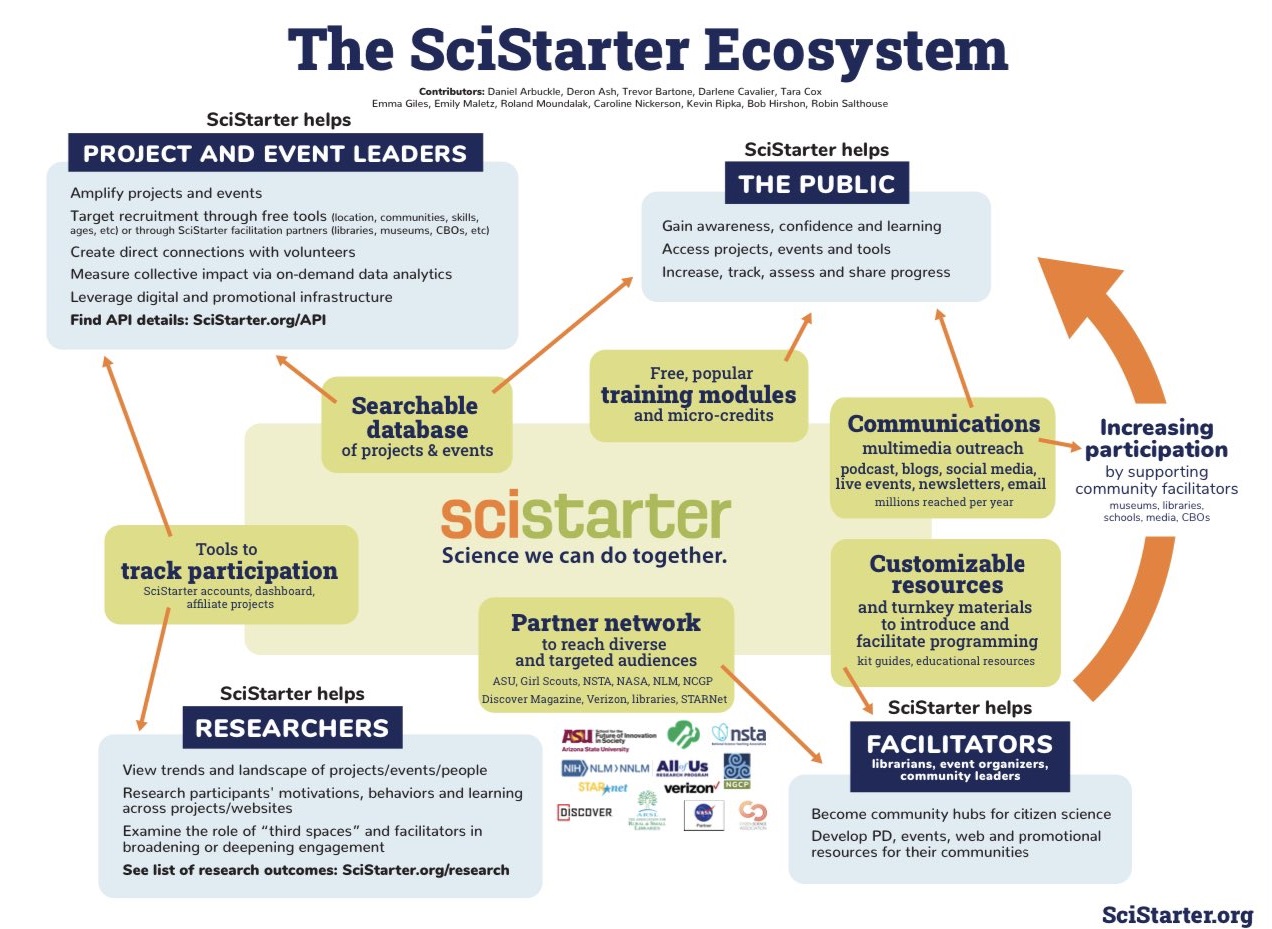SciStarter Alzheimer's Citizen Science Event
Step-by-step guide to analyzing vessels:
- To start analyzing go straight to “Analyze” and start watching a vessel movie. You can scroll the movies yourself using the slider below the movie. To make the movies play automatically, just check the “Autoscroll” checkbox.
- Next, find the vessel to be analyzed. Play the movie, paying attention only to the area within the orange outline. Usually (but not always) around the middle of the movie, a white vessel will appear in the center of the enclosed area. This is your vessel. If you see more than one vessel inside the outline, pay attention to the one that most closely follows the shape of the outline. Note that as each frame corresponds to a single layer of the brain tissue, depending on each vessel’s 3D shape, only a part of it may be seen in any one frame of the movie. However, by scrolling forwards and backwards you should see how the shape of the vessel follows the centre of the orange outline.
- As you scroll through the movie, you may see black “spots” inside the vessel, which are either moving (change position between frames) or stuck (do not change position in multiple frames). If there is at least one black “spot” that does not change position while the vessel is visible, the vessel is stalled. When this happens, click on the “Stalled” button & then click on the black “spot” directly in the movie to annotate the vessel as stalled. If no stuck “spots” are present, the vessel is flowing. In this case, click on the “Flowing” button to annotate the vessel as flowing. Important: Make sure you look through the entire movie before making a decision!
- Note that in some movies individual the black “spots” are less evident, even if the vessel is flowing. That is normal and depends on the focus of the movie. What you should concentrate on is “spots” or “gaps” that are present within the vessel and don’t move. If there is at least one such “gap”, the vessel is stalled.
- After you have given your answer, you’ll be shown feedback. In the case of “training” movies (ones that have already been seen and annotated by researchers), you will be able to find out whether or not you are correct. In the case of “real” movies, i.e. ones representing real experimental data where we don’t know the answer yet, we will show you the community answers and comments. If any stalls have been indicated, these will be indicated with red dots directly over the stalls in the vessel movie.
- Feel free to add your own comments on movies in the comment box - both for “expert” and regular movies - to help out fellow catchers! You can also discuss difficulties, tips and/or suggestions you may have on our forum: http://forum.eyesonalz.com/.
- When you are ready to move on to the next movie, click “Next” and keep going!
Introduction to Stall Catchers
What is SciStarter?

SciStarter is a globally acclaimed, online citizen science hub where thousands of projects, searchable by location, topic, age level, etc., have been registered by individual project leaders or imported through partnerships with federal governments, NGOs, and universities. As a research affiliate of North Carolina State University (NCSU) and Arizona State University (ASU), and a popular citizen science portal, SciStarter hosts an active community of more than 200,000 registered SciStarter members and millions of additional site visitors. Hundreds of citizen science projects use SciStarter's National Science Foundation (NSF)-supported APIs to help volunteers earn credit for their participation in their SciStarter dashboard, across all kinds of projects and platforms. These features enable SciStarter's partners (libraries, schools, museums, Girl Scouts and more) to catalyze customized engagement pathways and track and support the progress of their communities through SciStarter. SciStarter also supports researchers in managing projects, including best practices for engaging participant partners.

